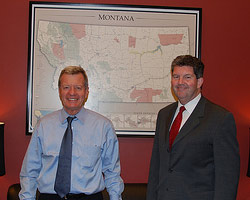
USPS improving customer access ahead of post office closures
The US Postal Service revealed yesterday that its customers can now access its services through nearly 100,000 locations. As well as 32,000 Post Office locations around the United States, postal services are also available through retail partners, grocery stores, office supply chains and pharmacies including retail chains Costco and Office Depot.
The Postal Service was highlighting an expansion of customer access currently underway, as part of efforts to persuade lawmakers and communities of the need to get beyond the “brick-and-mortar” approach of a retail network dominated by in-house Post Office branches.
So while 2,000 Post Office branches could be closed as USPS seeks to cut its overall budget from around $73bn closer to $60bn a year, it is pressing the point to public and lawmakers that closing a Post Office does not mean a community losing access to postal services.
Some 35% of retail revenues for the Postal Service now come from “expanded access locations” including retail partners, the USPS website and automated kiosks.
This summer is expected to see a revamp of the USPS website, splitting off corporate aspects to leave a dedicated consumer-facing site offering easier access to products and services, along with improved mobile apps to access services through smartphones.
“We’re teaming up with hundreds of new stores so customers can do postal business at places where they already shop,” said US Postmaster General Pat Donahoe. “Americans have more to do and less time to do it. We know simpler is better – online, on your mobile device, on your way, with an expertise that you can count on.”
Closing Post Offices

Montana Senator Max Baucus (left) met with Postmaster General Pat Donahoe recently to discuss post office closures
Along with the job losses associated with consolidating mail processing facilities, closing Post Office branches in rural areas has been a key concern among US Congressmen, whom the Postal Service need on side to make the major changes required to re-balance its books.
The USPS chief executive has been meeting with lawmakers for months to explain the issue.
While Senate and House committees have been pressing for the Postal Service to reduce its overheads dramatically to tackle multi-billion dollar losses, individually Congressmen have been speaking out against postal facility closures and consolidations.
Last week, Montana Senator Max Baucus met with Donahoe, showing him a map of his state “to make sure that Montana is not unfairly affected by drastic plans to reorganize”.
Speaking in this week’s US Senate subcommittee hearing regarding the need to close Post Offices, Postmaster General Pat Donahoe said the USPS was currently reviewing possible closures, although he said it currently had an “open mind” on the issue.
“What we are looking for at the moment is places that do less than an hour of business a day,” he said. “That’s less than 10 transactions per day.
“We’re obviously not going to close a Post Office if there’s nothing else available within 30 miles, but it there is within half a mile, we could.”
“Simplistic”
Addressing the same Senate subcommittee, the National League of Postmasters said renewed interest in closing Post Offices was too often “simplistically” based on ideas about closing excess facilities.
Mark Strong, the president of the postmasters’ organisation, insisted that closing post offices “saves the Postal Service very little money”.
He said: “It is one of those ‘cost saving’ measures that is popular with senior postal managers who wish to ‘look good’ and give the impression that they are driving costs out of the system, without really doing so.”
Strong blamed the recent recession and the overpayment of funds into pension and benefit programs for the USPS losses, but actually denied that electronic substitution had been a major factor in USPS financial difficulties.
He called for changes higher up in the USPS network structure, and in the Postal Service’s administration, such as the seven Area offices that “deliver no mail, sell no stamps, serve no customers and yet they cost $1.5bn a year, nearly three times the cost of the 10,000 smallest post offices”.












